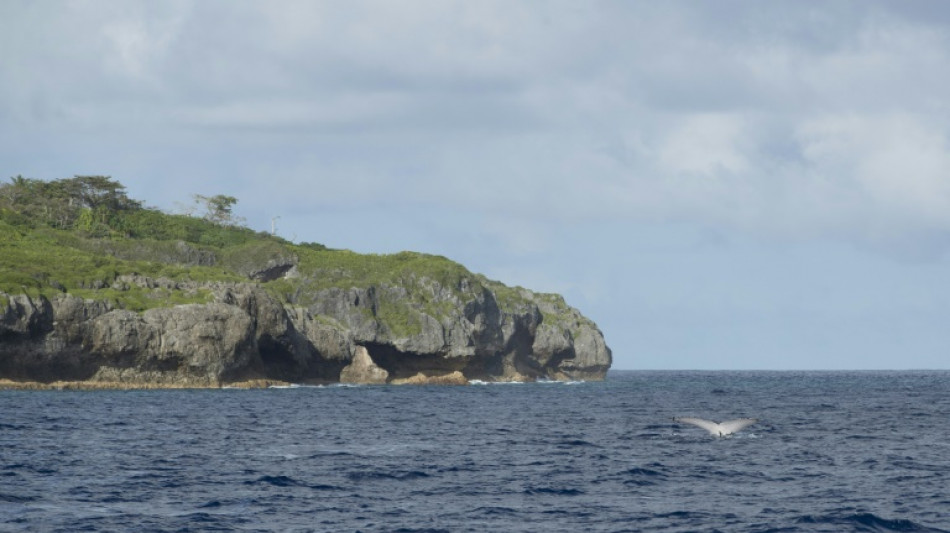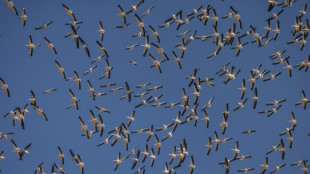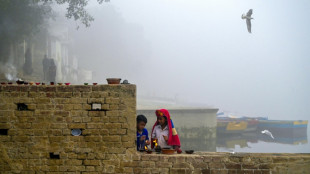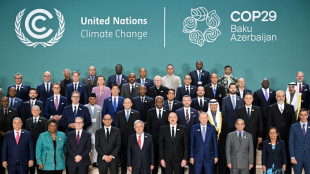

Crowdfunding conservation: A Pacific island's plan to protect its waters
For a little under $150, you can now directly sponsor marine conservation across one square kilometer of the Pacific Ocean, through a novel scheme announced this week by the tiny island of Niue.
Located halfway between Fiji and the Cook Islands, the vast waters of the "Rock of Polynesia" are home to coral reefs and undersea mountains that host diverse species, including sharks, dolphins, turtles and more.
But finding the resources to protect these habitats from the threats of illegal fishing, climate change and pollution had proven challenging for one of the world's smallest self-governing nations.
"We've been going to conferences for so long, telling our story, but it seemed like we weren't getting anywhere," Niue's Premier Dalton Tagelagi told AFP in an interview at the United Nations headquarters in New York, adding he had come to view summits as "talk fests with no action."
Under the new plan, companies, philanthropies and individuals can pay 250 New Zealand dollars (US $149) to protect and manage one or more square kilometers of water, called Ocean Conservation Commitments (OCCs).
There are 127,000 OCCs in total, corresponding to the size in square kilometers of Niue's "no-take" protected marine zone, which represents 40 percent of its overall sovereign waters.
Niue is thus hoping to raise $18 million through the initiative, which covers a period of 20 years.
"It's very exciting," said Tagelagi, adding that the government itself was sponsoring 1,700 units, one for each of the island's residents.
- Drone monitoring -
Most of the fishing on Niue takes place nearshore at subsistence level, involving traditional canoes.
But as technology has improved over the years, both in terms of fishing gear and also refrigeration of food, the amount harvested has increased, Brendon Pasisi, project manager of the Niue Ocean Wide Project, a public-private entity running the initiative, told AFP.
On top of that, plastic pollution and effluent runoff are contributing to the degradation of the marine environment, he added.
Then there are external challenges in the form of foreign fishing fleets that can intrude into the protected zone.
"It's a vast area to cover on patrol boats so we're looking at drones," said Premier Tagelagi, which the scheme will fund.
As a raised coral atoll that stands 60 meters above the ocean at its highest point, Niue isn't in danger of being swamped by sea-level rise, as many other small island nations are.
But climate change threatens it in other ways: the oceans are acidifying and heating up, threatening marine species including coral, while higher seawater could contaminate the island's freshwater supplies.
Climate change is also intensifying tropical storms, with Niue left reeling for many years following the Category 5 Cyclone Heta in 2004.
By protecting their natural treasures, Niueans will not only be honoring the values of their ancestors, but "it can also be an economic windfall for us" in terms of increased tourism, said Tagelagi.
Those who contribute will receive a certificate together with an annual progress report.
- 'Innovative' -
Angelo Villagomez, a senior fellow at the Center for American Progress and expert in indigenous-led conservation, praised the concept as a "very innovative model."
"If we're going to address climate change, if we're going to protect ocean resources, we have to get money to these frontline communities," he said.
This, said Villagomez, was vital for everything from purchasing boats and fuel to developing management plans and paying the salaries of rangers and scientists.
Success would be measured by key indicators, said Villagomez: "Are there more fish? Are they putting in climate change mitigation measures?"
Moreover, a communications push would be needed for the public to conceptualize protected ocean zones the same way they think about iconic national parks: something real and tangible, rather than existing only on paper.
P.Mathieu--JdB



